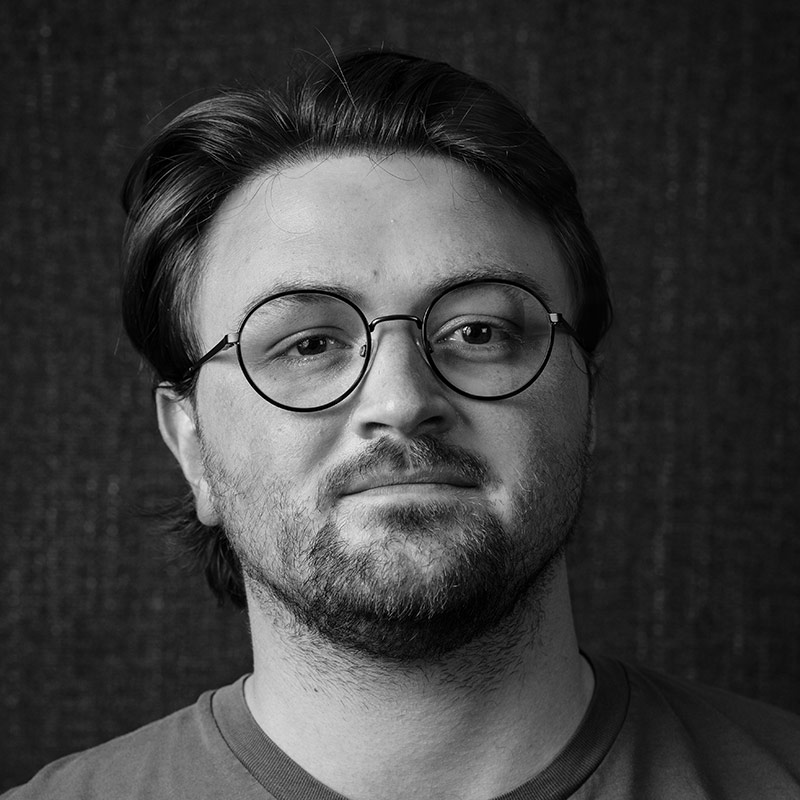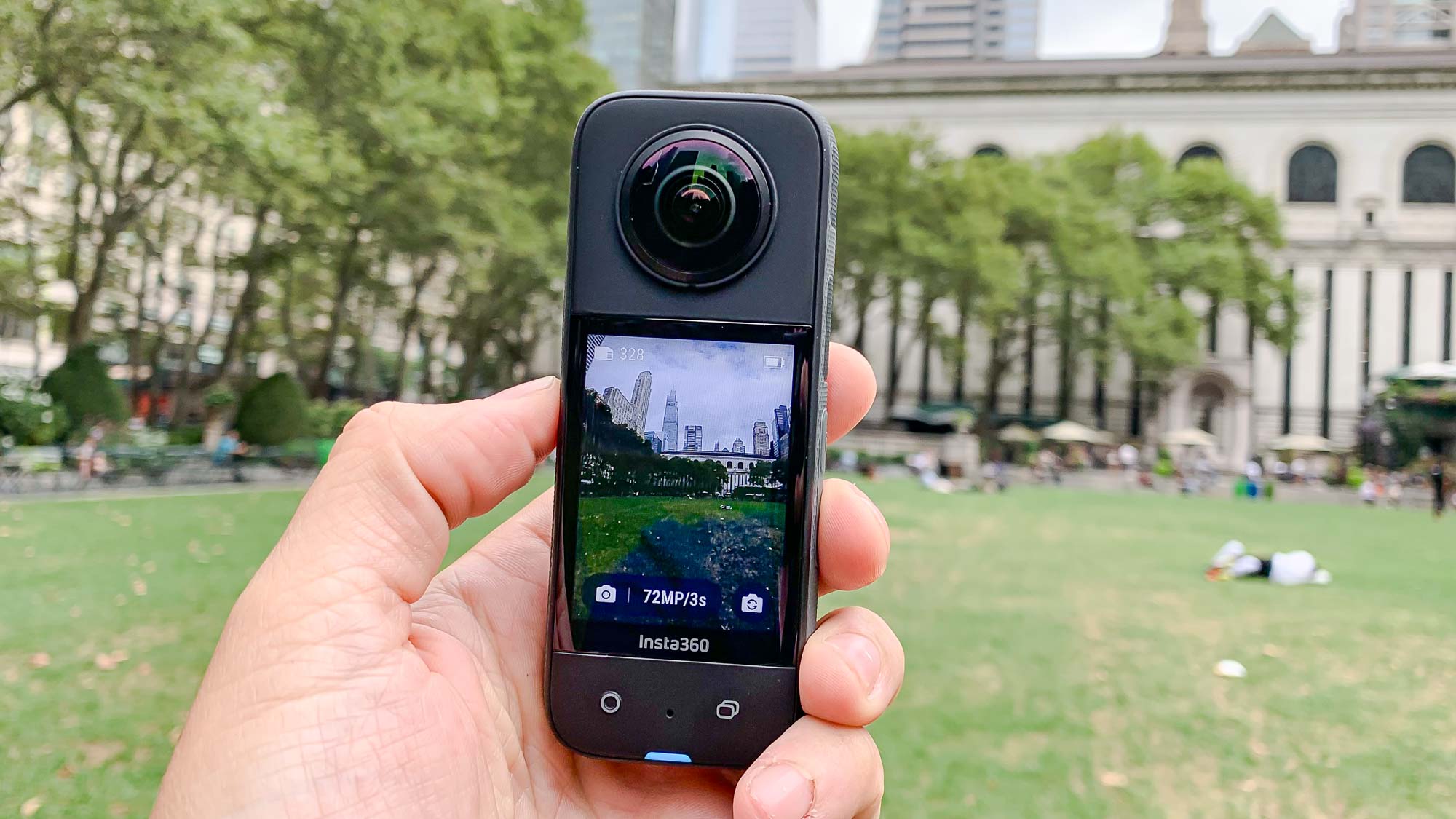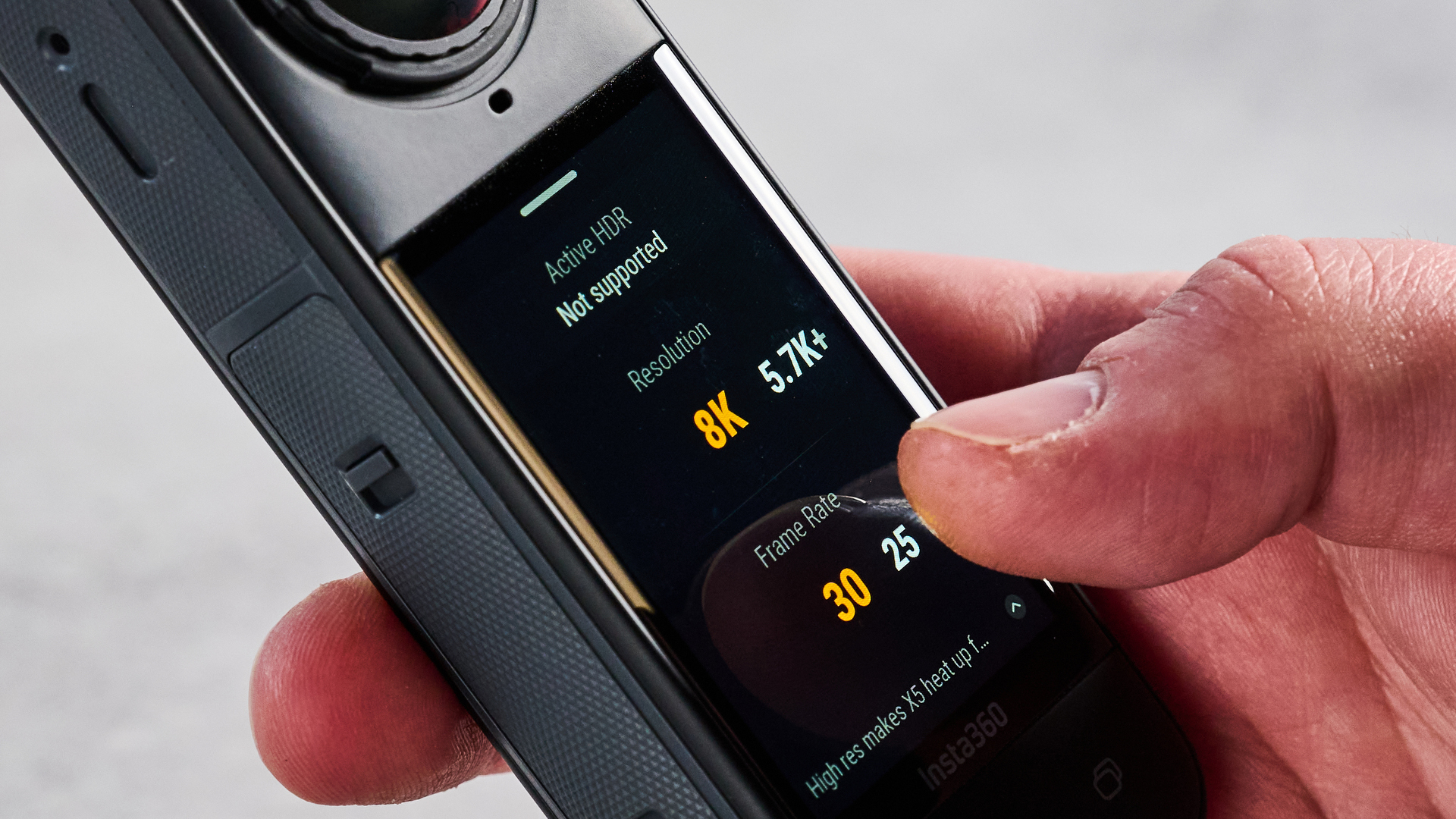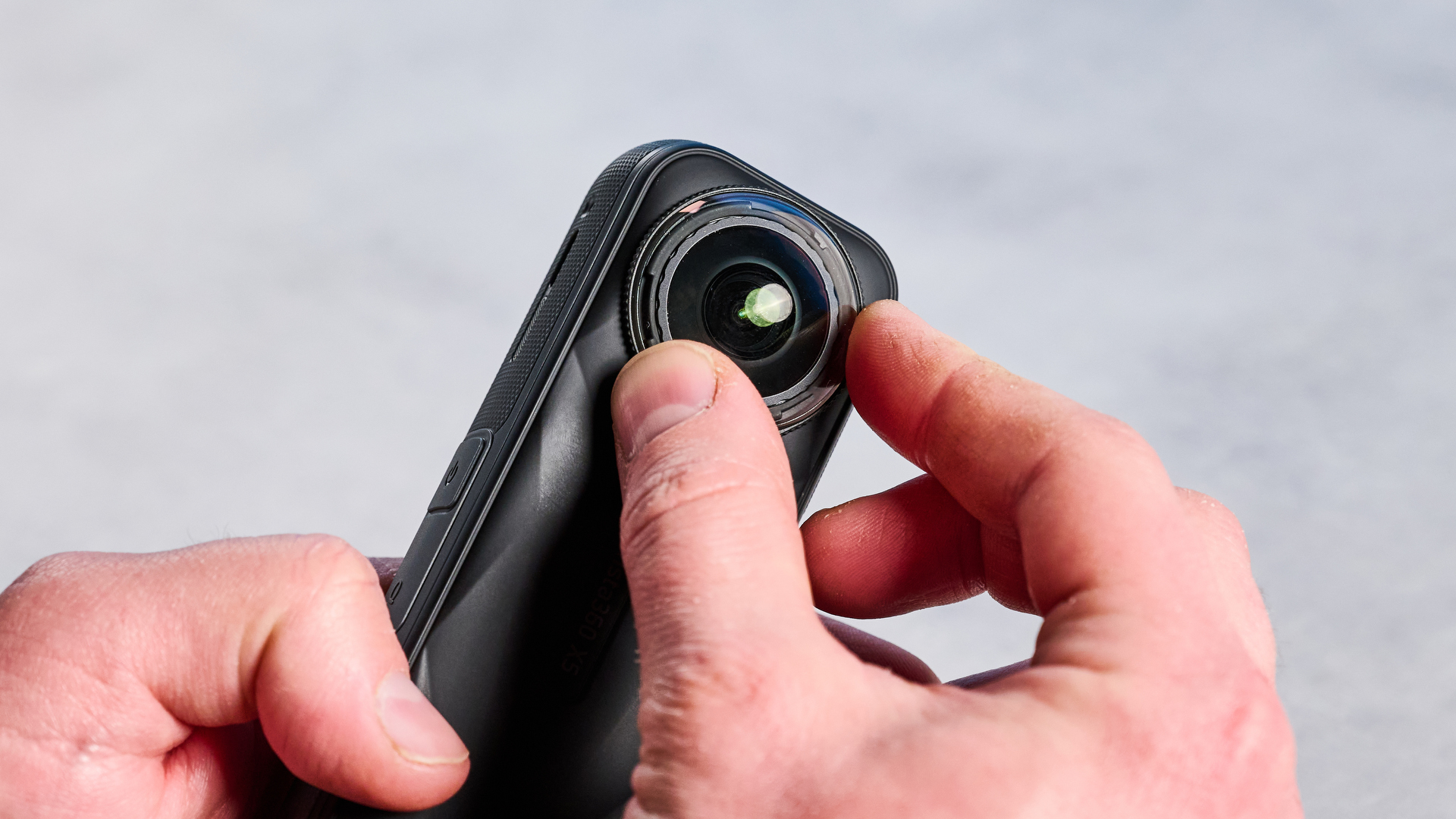Best 360 cameras in 2025
The best 360 camera for you, after personally testing them all

The best 360 cameras are perfect for content creators that need flexibility. With a 360 camera, you don't need to point your camera at what you want to shoot. Instead (as the name suggests), you capture everything around the camera in full 360 degrees and then choose your framing later.
This makes 360 cameras more flexible than traditional action cameras, and they're perfect for motovlogging and other high octane pursuits. 360 cameras also give you access to lots of cool effects, like invisible selfie stick modes to simulate a floating camera, while letting you flick between FoVs, as if you had multiple cameras set up at once.
360 cameras have come a huge way in the last couple of years. So which one is right for you? I've reviewed and/or owned all the cameras below, so I've tested each and every entry personally. Read on to find out my picks.

Pete is a senior editor at Tom's Guide. He heads up the site's reviews team and all cameras coverage here at Tom's Guide. He's the site's expert on action and 360 cameras, testing them constantly and comparing them with one another. Pete tests every single 360 camera that the site covers, and put them through their paces in a range of different scenarios. He loves geeking out about cameras in general, and is passionate about helping you find the right product for you.
The best 360 cameras you can buy today
Why you can trust Tom's Guide
These are my picks of the best 360 cameras you can buy right now. We've put all of these cameras through first hand testing, so you can rest assured they come highly recommended.
The best 360 camera overall

Specifications
Reasons to buy
Reasons to avoid
The Insta360 X5 is still the best 360 camera you can buy, offering the best all-round array of features right now, with the fewest serious weaknesses.
The X5 can record 360-degree footage in 8K/30p. That means you can reframe in up to 4K at 16:9 aspect rations. 8K is as high res as 360 cameras get right now. The X5 received upgraded sensors versus its predecessor, the X4, which produce a cleaner image in low light. I was very impressed by the cleanliness of the low light picture in testing.
As usual, Insta360's image stabilization does a great job, and footage throughout testing looked smooth and shake-free. Insta360 fitted the X5 with a mesh wind guard, and implemented a new wind reduction algorithm, which works an absolute treat. In testing, it did an incredible job at cleaning up wind buffeting in fast-paced footage — better than a standalone mic.
360 camera lenses are liable to damage, so on previous X-line iterations you had to use lens guards which impacted image quality. Insta360 remedied this with the X5, which features user-replaceable lenses via an affordable kit.
Importantly, the Insta360 app is the easiest to use of all the competition, making editing 360-footage on-the-fly easy. It's very intuitive, with lots of editing features and makes it easy to upload straight to social. These all make it the best for casual users and content creators. For more in-depth editing, the Insta360 Studio desktop app makes the heavy workflows much easier and includes many useful tools for professional-looking results. Both are totally free!
Read more in my full Insta360 X5 review.
The best 360 cameras for pros

Specifications
Reasons to buy
Reasons to avoid
The GoPro MAX2 is easily the best camera for professional video shooters who want to inject some 360 pizazz into their productions. It shoots "true" 8K, which means that after stitching the two 180-degree videos together, there is still 8K of actual resolution. The Osmo 360 and X5 lose resolution when stitching and have to upscale the final 360 image back to 8K. The difference is negligible, but this extra resolution will help pros maintain as much actual resolution as possible when cropping to reframe 360 footage in post.
The MAX2 also features GoPro Labs compatibility, which allows users to install custom open source firmware and tailor the camera's behavior to their specific needs — set up motion detection or recording based on accelerometer or GPS movement, and more.
Just like the Osmo 360, the MAX2 features log recording and 10-bit color, again giving flexibility in post. There's also timecode sync, which can be used to align video footage from multiple cameras, as well as video and audio, more easily in post. Its companion app isn't the best for casual users — that award goes to the X5 and Insta360 app — but pros will be using third party software anyway, and there are plug-ins available for editing footage in the Adobe suite.
The MAX2's video looks superb, as you can see demonstrated below. Its HyperSmooth stabilization works extremely well, and GoPro's standard color profile is very natural and lifelike. Low light footage isn't the best, though, thanks to smaller sensors than those on the X5 and Osmo 360.
The MAX2 offers 360-degree audio, so users can align sound to where it occurred in the 360-degree frame. The wind reduction isn't the strongest, so motovloggers will want to look at the X5. However, in single lens mode you can chose which mic you want to be active, which is very handy.
The MAX2 ships with cold weather Enduro batteries, to better suit pros filming in challenging locations, such as mountains. It can use standard Enduro batteries, though, to suit professional filmmakers already using GoPro gear. As always, the MAX2 uses GoPro's standard mounting fingers/forks, as well as a proprietary quick release system, a 3/8-inch thread and a magnetic attachment system, giving you lots of ways to mount the camera.
Find out more in my full GoPro MAX2 review.
The best 360 camera for DJI users

Specifications
Reasons to buy
Reasons to avoid
The DJI Osmo 360 is the best 360 camera for existing DJI users. If you already own a DJI camera or microphone, like the DJI Osmo Action 5 Pro or DJI Mic 2, then the Osmo 360 will blend in perfectly with your existing gear and workflows.
The Osmo 360 uses the same 1,950mAh battery as the Osmo Action 5 Pro (also compatible with the DJI Osmo Action 4), so you can share batteries between devices and not need to bring/keep track of different power cells.
The Osmo 360 also utilizes OsmoAudio, meaning it can hook up wirelessly to DJI microphones. OsmoAudio isn't ideal for wide dynamic audio ranges and loud environments (like motovlogging) but is excellent for quieter environments and speaking.
Obviously, those aren't the only reasons to buy the Osmo 360. This is a formidable 360 camera in its own right. It shoots 8K 360-degree video at 30p or 50p (although at the latter, battery life is seriously compromised, while 50fps is not a highly used frame rate for online content creation). Footage looks excellent, and the stabilization is fairly decent.
You can also shoot the Osmo 360 in single lens mode at up to 5K/60fps, which is good for oversampling 4K footage, or if you need extra resolution to crop into frame.
The Osmo 360 features 105GB of internal storage, so if you forget your Micro SD card, no worries. You can still shoot.
This camera was DJI's first foray into 360-degree recording and, as starts go, it was a pretty strong one.
Find out more in my full DJI Osmo 360 review.
The best budget 360 camera

Specifications
Reasons to buy
Reasons to avoid
The Insta360 X3 is ageing now, but is still on sale and offers decent specs for those on a budget. Importantly, this camera can be found for under $300, which is about as cheap as good 360 cameras come. Meanwhile, this X3's successor, the X4 is still pushing upwards of $500, at which point you might as well buy the GoPro MAX2. The X4, X5, MAX2 and Osmo 360 are much newer cameras with much, much beefier specs, which is why they're much pricier.
With its 5.7K max resolution, you can reframe in up to 2.7K. It has strong image stabilization that will make even the bumpiest videos look smooth, and can capture 4K single lens video at up to 60 fps. A TimeShift feature also lets you slow down or speed up specific segments of your videos.
As an Insta360 camera, the X3 uses the best companion app in the game: the Insta360 app, which makes it easy to edit 360 footage on the go. Alternatively you can reframe in the Insta360 Studio desktop app, which is my favorite way of editing 360 footage, hands down.
The X3 is water resistant to 10 meters (33 feet), and has a much larger touchscreen display than its predecessor, which makes previewing video and changing settings on the fly easy. It also has a decent battery life of up to 80 minutes when shooting at 5.7K.
While I didn't review this camera personally for Tom's Guide, I actually owned the X3 for around 2 years and used it extensively, so you can rest assured that I have spent a considerable amount of time using and testing this camera.
Read our full Insta360 X3 review.
FAQs

Insta360 X5 vs GoPro MAX2 vs DJI Osmo 360
It can be difficult to choose between these three flagships. Here's a comparison of the key areas, and which cameras come out on top for various people or purposes.

Image quality & frame rate
The DJI offers 8K at a higher 50fps frame rate than the X5 and MAX2, which top out at 30fps in 360 mode. That said, 50fps isn't a particularly usable frame rate for online content creation. The GoPro meanwhile offers "true" 8K rather than slightly less than 8K (due to stitching) which is then upscaled to 8K (as with the X5 and Osmo 360). The increased resolution will make the MAX2 more appealing to pros who need to crop.
The Osmo 360 also features larger sensors than the X5, for theoretically better low light performance. Although I actually prefer how the X5's low light footage looks. Both the DJI and X5 have better low light performance than the GoPro MAX2.
Stabilization
Although their 30fps maximum frame rate is lower, the X5's and MAX2's stabilization is noticeably better than the Osmo 360's, resulting in nicer looking footage. Very important for motovloggers! There isn't much in it between the MAX2 and X5 though.

Lenses
A major factor in today's 360 cameras are replaceable lenses. 360 lenses are hard to cover yet easy to damage, so manufacturers now fit replaceable lenses. How easy they are to replace, though, is not the same across all three major brands. The Osmo 360 needs to be sent off to DJI for repair if the lenses get damaged. You can purchase a protection plan from DJI to cover you for damages and repairs... only, if you're in the U.S., you can't. The Osmo 360 isn't being sold directly by DJI in the U.S., and direct from DJI is the only way you can buy a protection plan. So that sucks. Insta360 sells a lens replacement kit, which makes the process of changing lenses very simple. The GoPro MAX2 comes out on top here, though, as its lenses are simply screw on, screw off, and are therefore the easiest to change out in the field.
Pro features
The MAX2 has the most pro features, including Log recording and 10-bit color, which are also features on the Osmo 360. The MAX2, however, gives users access to GoPro Labs, which allows you to run custom firmware tailored to your specific needs. Again, the MAX2 shoots true 8K, and while it has no desktop editing firmware, plug-ins are available for the Adobe suite. The MAX2 is going to give you the most post production flexibility.
Battery
All three cameras offer superb battery life, with the X5 and MAX2 lasting around 80 minutes at 8K/30p and 90 minutes at 4K/60p single lens. The Osmo 360 has them both beat though, lasting 112 minutes at both 8K/30p and 4K/60p. All three cameras perform very well thermally, not overheating at all during my indoor battery stress tests.

Audio
You ideally don't want to hook up a wired microphone when shooting 360 footage as the wires intrude into your frame. However, totally wireless mics — which the Osmo 360 hooks up to with its OsmoAudio connection to DJI mics — reduce sound quality as they use Bluetooth. The Insta360 X5 can accept external mics, but has the strongest internal microphones in the game anyway, and honestly, with the wind reduction algorithms, they're often better than using an external microphone.
The Osmo 360's and GoPro MAX2's microphones, while not awful, are nowhere near as competent, and neither has a wired microphone interface either, so you can't hook up a high-end wired mic if you did want to. You can with the X5, which gives you the opportunity to use a high quality mic and either shoot in single lens or crop the mic out in post.
Ecosystem
The Osmo 360 features wireless hookup to DJI devices, while also using the same 1,950mAh batteries as the DJI Osmo Action 5 Pro (our favorite action camera). Those last two features might make the Osmo 360 the better choice for people already invested in the DJI ecosystem.
The GoPro MAX2 uses the same Enduro batteries as other GoPro devices, so will likewise be a solid option for existing GoPro users. Insta360, meanwhile, fits different batteries to successive devices, so compatibility is limited.
Software
There's also software to consider. While all three cameras have solid companion software, the Insta360 app is the best one for content creators and casual users thanks to its ease-of-use, wide array of features and straight-to-social workflow. The Osmo 360's companion app, Mimo, is OK, and roughly on a par with the GoPro Quik app. Pro users will want to use desktop software, though, such as Adobe Premiere.
FAQs
Here are some answers to the most frequently asked questions about 360 cameras. Hopefully you can find the answers
What is a 360 camera?
Simply put, a 360 camera records a full 360-degree field of view, meaning it captures everything around the camera, rather than the restricted fields of view of, say, a traditional single-lens action camera.
The best action cameras with single lenses have a fixed field of view and will only capture what you point it at. A 360-degree camera will capture everything around it in full 360 degrees.
The benefit of that is flexibility. You don't have to point a 360 camera at what you want to shoot. You film first and then frame later!
How do 360 cameras work?
By having more than one lens, with a wide field of view, a 360 camera can "see" in 360 degrees. If each of those lenses targeted onto a sensor, you then have a recordable 360-degree view!
This often involves placing the lenses opposite one another, though, as you'll see with the Insta360 X4, so most 360 cameras use more than one sensor (one per lens usually). The camera then stitches together the images from each lens (so 180-degrees per lens on a two-lens camera) to create a 360-degree FoV. This often results in "stitching" lines being visible in footage, where the fields of view haven't met up perfectly, overlapping or missing small slivers instead.
Here's where things get interesting. The maximum resolution of the camera (i.e. 8K for the Insta360 X4) is for all the sensors combined, so that full 360-degree FoV. If you then want to export in 16:9 for people to watch on YouTube, you'll need to crop into that image and will lose resolution.
How much resolution you lose depends on your reframing FoV, or essentially how wide of an angle you take. Reframing at a very wide FoV like 170-degrees will allow you to keep lots of resolution, but your video will suffer from wide angle barrel distortion (fish eye effect). Reframing at a narrower FoV like 110-degrees will give your footage a more linear/less distorted look, but will lose a lot more resolution.
As a rough guide, on the 8K Insta360 X5, you can reframe in 4K at the widest MegaView 170° FoV, and 2.5K/1440P in the narrowest Linear 110° FoV.
Meanwhile, on the 5.7K Insta360 X3 or the 5.6K GoPro Max, you're looking at around 2.7K in the widest MegaView 170° FoV and 1080P in the narrowest Linear 110° FoV.

Which is better: Insta360, DJI or GoPro?
That depends what you want! Insta360 is, generally speaking, making the best 360 cameras right now. That's why three of the entries above are Insta360. The X5 is simply the best blend of features and performance.
DJI is hot on Insta360's heels, though, and while the Osmo 360 is not quite as capable as the X5, it could be the better choice for existing DJI users thanks to integration within the constantly-expanding DJI ecosystem.
GoPro is way, way behind. Its only offering in the 360 world as I write this is the GoPro Max, which is ageing, with similar features to our top budget pick, the Insta360 X3. GoPro has been losing ground to Insta360 and DJI for a while now, not just here but in the action cameras world, too. Its failure to innovate for many years has let its rivals gain ground. Although with a roster of competitive GoPro cameras rumored for release soon, that may yet change!
What should you look for when buying a 360 camera?
The main factor to consider, as long as you have the budget, is maximum resolution. Above, I explained how 360 cameras work and that if you want to reframe your footage to 16:9 to actually view it (you can't view 360 degrees on a screen), you're going to be losing lots of resolution.

You want as much resolution as possible, so that when you reframe, you have more flexibility over camera angles while keeping image quality. The Insta360 X5 is currently the highest res camera, at 8K, which means you can reframe 16:9 footage in 4K at a 170-degree FoV.
You'll also find that 360 cameras tend to fall into two camps: small, pocketable stick-style devices, and larger squarish (or circular) cameras. The former tend to be less expensive, and are designed for more casual and impromptu shooting. In the second category are cameras such as the Insta360 X5, which are larger and more expensive, but tend to produce higher-quality video. Generally, the design of the latter type of 360 camera also means you'll have to attach it to a tripod or some other mount if you want to capture good footage.
Be sure to think about how you plan to use a 360 camera before you purchase it; if you want to get some fun selfies with friends, then the stick-style cameras will fit your needs well. If you want to capture hair-raising exploits when you go skydiving or skiing, then a larger camera may be the better option.
How I test 360 cameras
As reviews and cameras editor here at Tom's Guide, I test all the latest 360 camera releases in the same way. Now, there's only one real way to test 360 cameras, and that's to strap them to yourself or something else and get shooting! Before I do that, though, I subject each camera to our usual evaluations: price, build quality, styling and overall design, number of ports, etc.

I then shoot footage in each camera's full 360-degree FoV mode. While I'm shooting, I'm analyzing each camera to see how they perform: do they overheat? How long is the battery life? How easy is the camera to control and change settings on while I'm shooting? How many recording features are available to me? And more.
I then always analyze the footage in whatever companion software the camera comes with, looking at image quality, contrast, lens artefacts, and stitching. Naturally, I also test how many features the companion software offers, and how easy it is to use (360 footage needs lots of tweaking and adjusting in software).
Finally, I reframe the footage to 16:9 to get an idea of how sharp the final footage looks.
Get instant access to breaking news, the hottest reviews, great deals and helpful tips.

Peter is a Senior Editor at Tom's Guide, heading up the site's Reviews team and Cameras section. As a writer, he covers topics including tech, photography, gaming, hardware, motoring and food & drink. Outside of work, he's an avid photographer, specialising in architectural and portrait photography. When he's not snapping away on his beloved Fujifilm camera, he can usually be found telling everyone about his greyhounds, riding his motorcycle, squeezing as many FPS as possible out of PC games, and perfecting his espresso shots.















